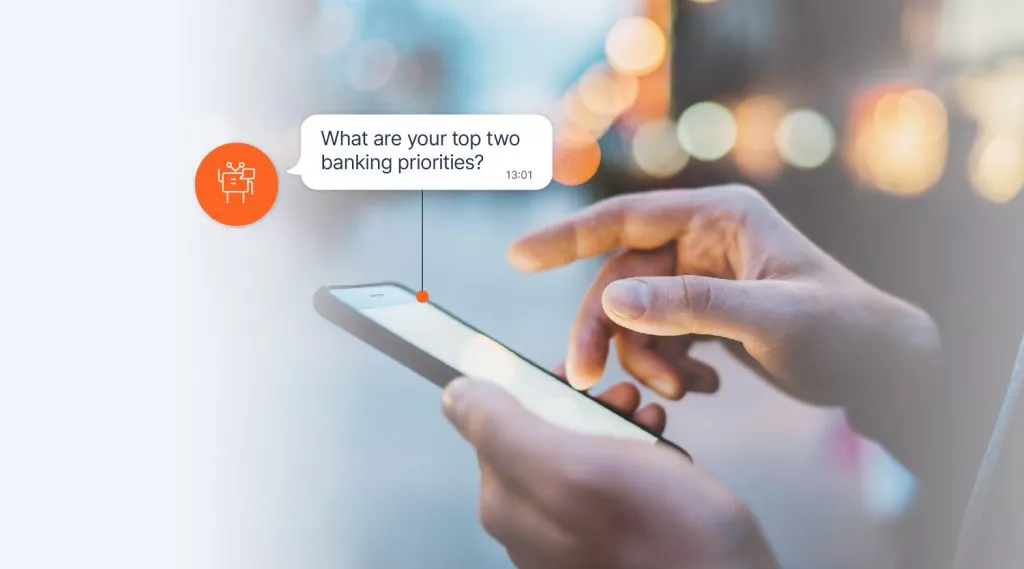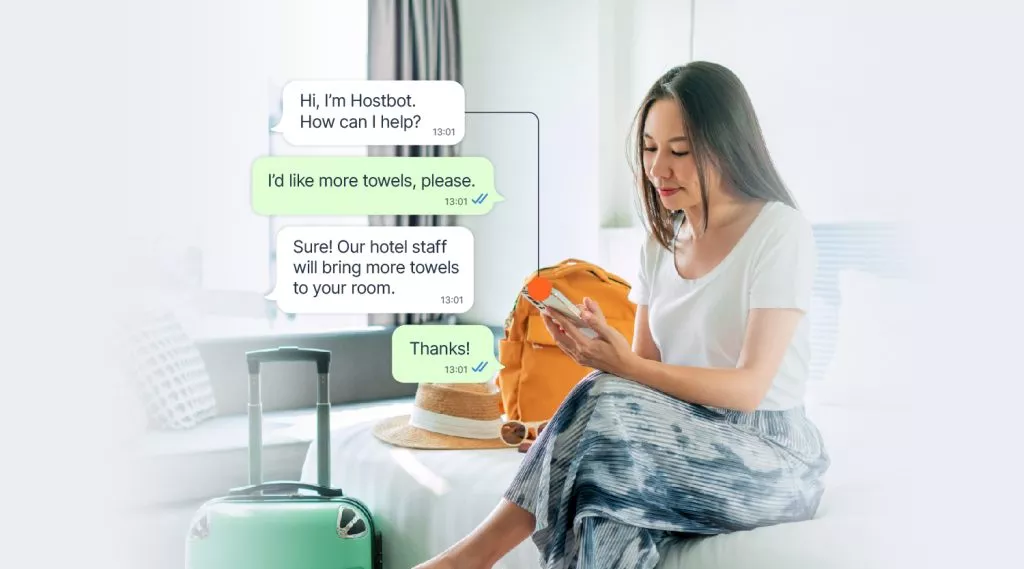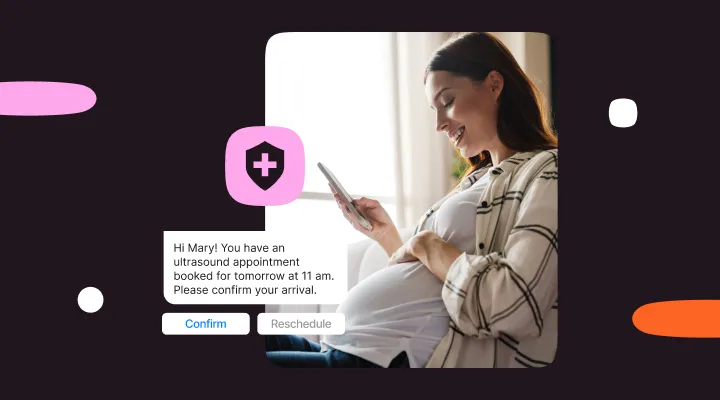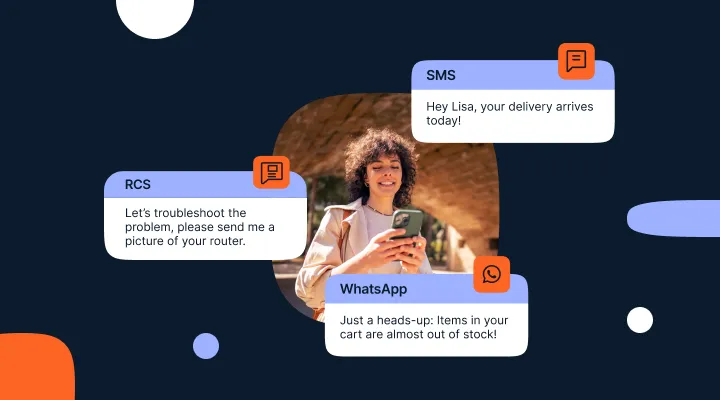What is intent?
User intent refers to the customer’s or user’s goal or requirement for engaging with a chatbot. It represents what the customer wants to achieve when interacting with a chatbot. It’s the “why” behind the “what” they say.
For example, if customers ask, “When does your London store close?” they intend to know the opening hours.
Types of chatbot intents and entities
For AI chatbots, training the intent engine in the backend is essential to make your chatbot more effective.
Chatbot intents fall into several distinct categories, each designed to serve a specific purpose in the conversation:
- Informational intent: Users want general information about your business, such as “What are your store hours?”
- Transactional intent: The customer wants to perform a specific action, such as placing an order or making a reservation. “Hello, I want to book a room in your hotel.”
- Navigational intent: The client wants information about reaching nearby locations or exploring the website section. For example, “Please tell me your store locations in London.”
- Support intent: The user requires help with troubleshooting issues and seeks technical assistance. For example, “My internet isn’t working. I need help.”
- Feedback intent: The client wants to share their feedback on your services or products. For example, “I just received my bathing suit, and the quality is amazing. Keep up the good work.”
These are just a few examples. The intents can vary and be very specific based on your industry.
Learn about the different types of chatbots available and find out how they can help your business grow.
Chatbot intent classification
Chatbot intent classification is the process of training chatbots to understand and categorize user messages based on their intentions.
By feeding the bot with data, it can identify patterns and key phrases from customer input. By understanding the customer’s goal, the chatbot can respond more effectively, providing tailored assistance and ultimately improving the overall customer experience. It’s about moving beyond simply recognizing words and focusing on understanding the underlying purpose of the message.
Artificial intelligence (AI), powered by machine learning (ML) and natural language processing (NLP), is essential for automating chatbot intent classification.
AI models can accurately identify and categorize customer intents by analyzing:
- patterns
- keywords
- the context of their messages
This enables the chatbot to instantly understand the purpose behind incoming queries and respond properly without human intervention.
Once trained, AI models classify customer intents instantly, empowering chatbots to provide accurate, real-time responses without human involvement. This automation saves time and resources while ensuring consistent results across countless interactions. Furthermore, AI models constantly learn and adapt to new data, refining the classification process.
By leveraging AI for intent classification, businesses:
- enhance chatbot efficiency
- elevate user experiences
- free up human staff to focus on more complex tasks
The benefits of chatbot intent classification
- Improved user experience: Accurate intent classification empowers chatbots to deliver more relevant and helpful responses, resulting in a significantly improved user experience.
- Faster response times: Intent classification enables chatbots to identify the purpose behind user messages swiftly. This way, they can promptly and efficiently address the most frequently asked questions.
- 24/7 availability: Intent classification enables chatbots to provide accurate assistance and information to customers 24/7. This can significantly enhance your brand’s accessibility and availability to potential clients.
- Personalization: Intent classification enables chatbots to understand user preferences and adapt their responses accordingly, resulting in more helpful and personalized interactions.
- Cost reduction: Intent classification enables chatbots to automate and manage customer interactions. It minimizes the need for human intervention and potentially reduces business operational costs.
Chatbot intent examples
To illustrate this concept, we’ll showcase some of the most common chatbot intents across various industries. Let’s delve into these examples.
eCommerce
Customer service
Insurance industry
Banking
Travel
Healthcare
Steps for chatbot intent training
Intent training is critical to improving a chatbot’s understanding and responses to user requests. By implementing specific strategies, developers and business owners can empower their virtual assistants to handle a wide range of user interactions effectively.
1. Define clear intent categories
Begin by defining intent categories that align with your chatbot’s purpose and cater to customer needs. Identify common customer goals or actions and create distinct categories for each. Analyze chat logs and recurring customer questions to pinpoint these categories. Additionally, consult your support team for valuable insights.
For instance, a customer support chatbot for an eCommerce store might have intent categories like:
- “Order status”
- “Product inquiry”
- “Return/Refund assistance”
- “Shipping policy”
2. Collect and mark training data
This step involves collecting a diverse set of customer messages and labeling them with the relevant intent categories in your knowledge base. Ensure your training data includes a diverse range of user questions and accurately represents the user intent you want your chatbot to recognize.
For example, gather inquiries like “Where is my order?”, “Can I return this item?” or “Tell me more about product X.” Then, assign these messages the appropriate intent labels, such as “Order status,” “Return/Refund,” or “Product inquiry.”
3. Train an intent classification model
Leverage machine learning (ML), natural language understanding (NLU), and natural language processing (NLP) techniques to train a model for intent classification.
Typically, this involves:
- fine-tuning algorithms to process the labeled training data
- enabling the model to learn
- accurately identify intents within user messages
4. Get user feedback
Customer feedback is invaluable for enhancing your chatbot’s intent recognition capabilities. Regularly gather and analyze customer ratings and reviews to pinpoint errors or new intents the chatbot might encounter. Integrate these new intents into the training process to refine and update the classification model. This iterative approach will improve the chatbot’s natural conversational flow and ensure it adapts to evolving user needs.
Consider implementing a chatbot feature that prompts users to leave feedback after each interaction. This would make it easy to collect valuable insights.
5. Monitor and update regularly
Finally, regularly monitor your chatbot’s performance in recognizing intents in real-world interactions. Identify any new trends or shifts in user behavior that may necessitate updating or adding new intent categories.
Utilize chatbot analytics and dashboards to track key metrics like:
- message click-through rate
- user engagement percentage
- customer satisfaction scores
Suppose your chatbot has accurate intents for pricing, order, and shipping information. However, your users are increasingly complaining about shipping speed and order difficulties. This signals a need to refine intent classification for these specific issues.
Conclusion
As NLP technologies continue to advance, intent recognition will become even more sophisticated. Chatbots will be able to understand complex queries, handle multiple intents within a single message, and even anticipate user needs before they are explicitly stated.


















